Let's talk Cairn Terriers
A hardy little dog with plenty of energy, the Cairn Terrier comes from the rugged Isle of Skye, off the northwest coast of Scotland. Cairn Terriers get their name from the cairns or mounds of stones that dot the hilltops in this weather-beaten landscape—they were originally bred to catch the vermin and rodents that hid within. Their pointy ears, bright eyes and high tail give them an alert look that matches their intelligent personality. Cairn Terriers still have the liveliness and tenacity that set their forebears apart as working dogs but their friendliness, sociability and willingness to sit on your lap for cuddles mean they also make great pets.
Official name: Cairn Terrier
Origins: Scotland
Cairn Terrier Dog Food
Drooling tendencies
1 out of 5Shedding Level
3 out of 5Energy level*
3 out of 5Compatibility with other pets
4 out of 5Warm weather?
3 out of 5Suited to apartment living
3 out of 5Family pet?*
5 out of 5Can stay alone
1 out of 5
| Male | Female |
|---|---|
| Height | Height |
| 28 - 30.5 cm | 28 - 30.5 cm |
| Weight | Weight |
| 6.5 - 7 kg | 6.5 - 7 kg |
| Life Stage | |
|---|---|
| Adult | |
| 10 months to 8 years | |
| Mature | Senior |
| 8-12 years | From 12 years |
| Baby | |
| Birth to 2 months | |
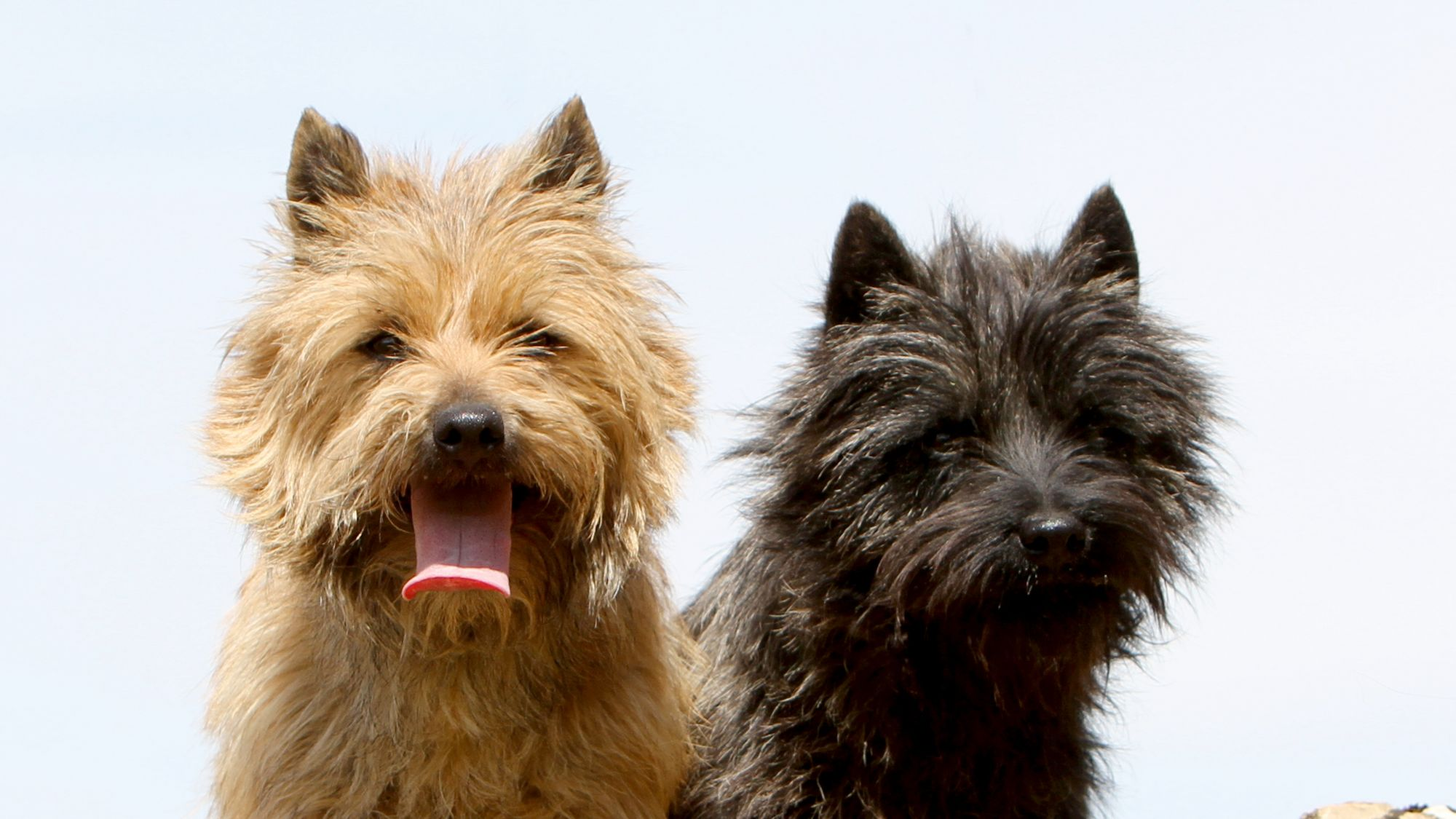
Get to know the Cairn Terrier
All you need to know about the breed
The Cairn Terrier comes from the Isle of Skye, off the northwest coast of Scotland. A native of the land of driving rain, the Cairn Terrier embodies the old adage ‘there’s no such thing as bad weather, only bad clothing’—their thick, resistant, double coats mean they’re not afraid of a little bit of that famous Scottish weather.
The Cairn Terrier was originally bred to hunt out vermin from the stone cairns that dot the windswept landscape of their native land. Their name may hark back to these austere origins, but the modern-day Cairn Terrier generally does not object to a less rugged lifestyle—as long as they have plenty of regular exercise, they don’t need a big garden. Their playful, bold and lively nature makes them a great choice for families—once trained, the Cairn Terrier gets on well with children.
Cairn Terriers are intelligent little dogs and they respond well to reward-based training. Take any treats out of their daily food portion, of course! They can learn an impressive number of tricks and commands with patient and thorough training. That training will be needed to curb Cairn Terriers’ enthusiasm for digging and barking, sometimes even at the same time.
Although Cairn Terriers should be fine with other dogs and even cats, their drive to chase smaller animals may be trickier to overcome. But if there are no rabbits, guinea pigs or other small pets around Cairn Terriers make a great addition to the family.
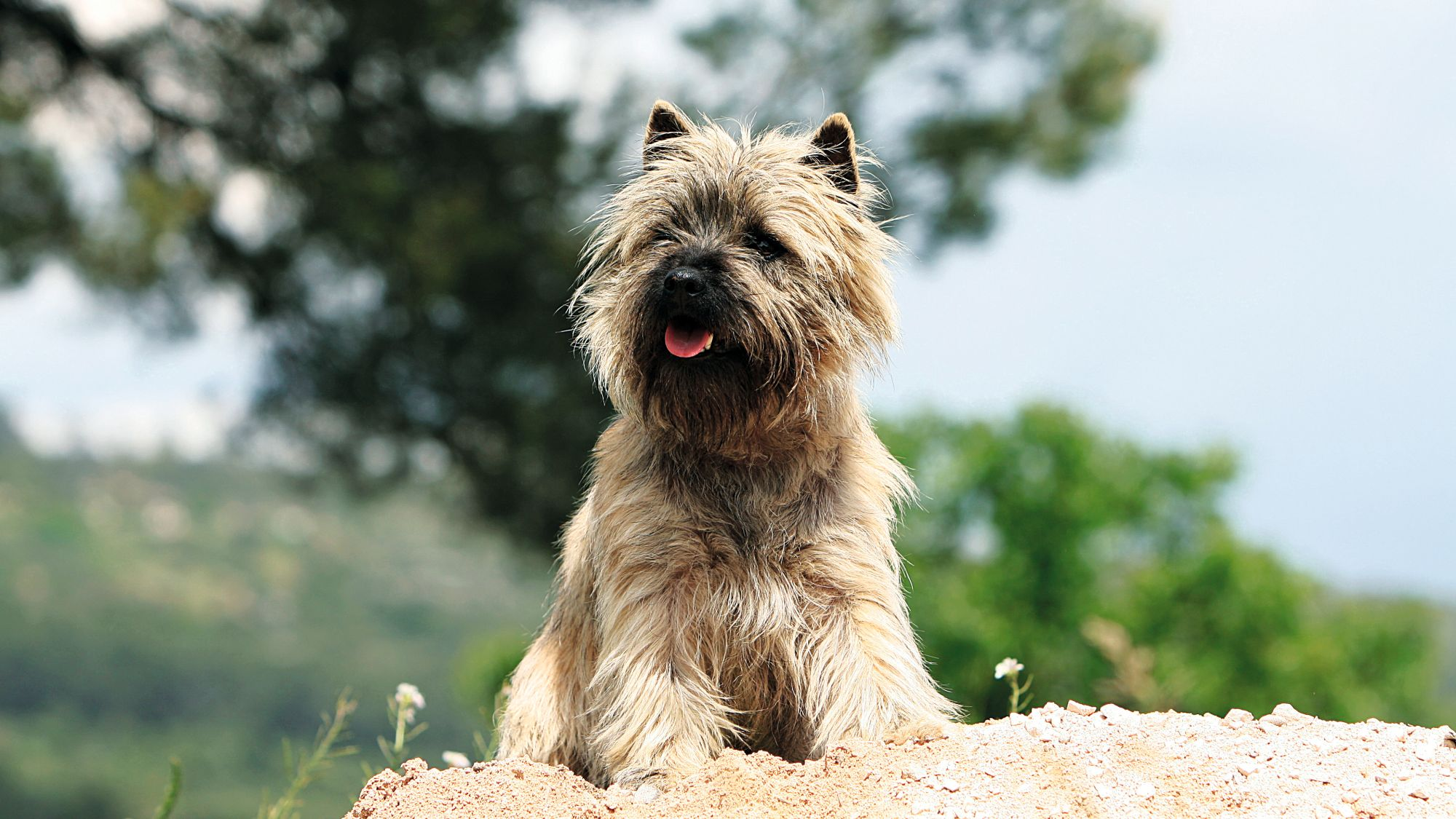
2 facts about Cairn Terriers
1. We’re off to see the wizard …
“Toto, I have a feeling we’re not in Kansas anymore.” That’s right, Toto, Judy Garland’s four-legged co-star in the 1939 film The Wizard of Oz was a Cairn Terrier. Toto was played by a female Cairn Terrier named Terry. While it was her most famous role, it was not Terry’s only brush with fame: She appeared in a string of other films, including alongside Shirley Temple in Bright Eyes in 1934.
2. You can take the dog out of the dig
… but you can’t take the dig out of the dog. While it may no longer be their job, Cairn Terriers will do what Cairn Terriers were bred to do—and that is dig. With their strong little front paws and tenacious natures, they will thrive if, alongside chances to run and play, they have access to a digging space. Their owners will thrive if that space is not in the middle of a pristine lawn or lovingly planted rose bushes.
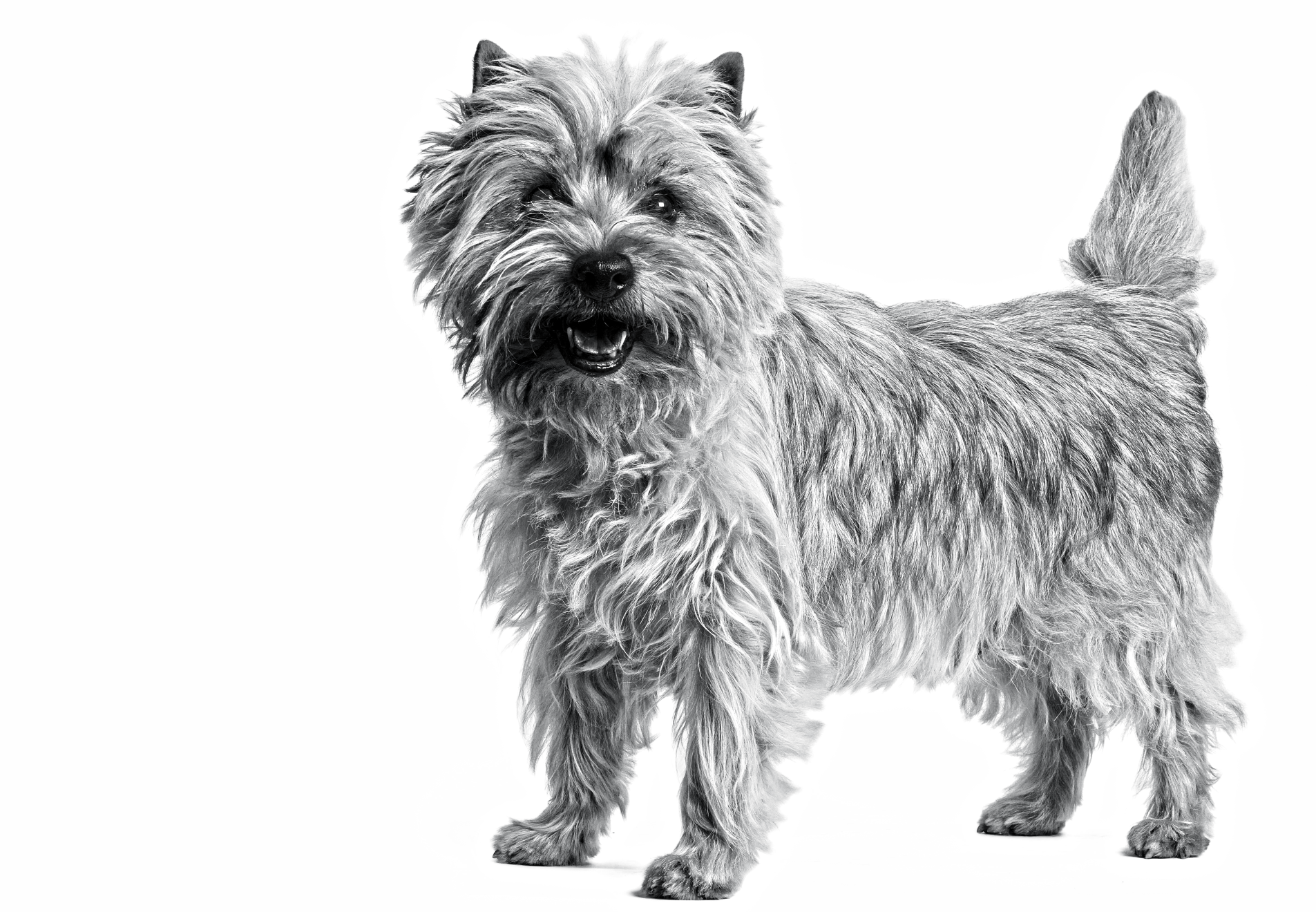
History of the breed
The Cairn Terrier is one of the oldest terriers, dating back several hundred years, although the breed’s exact origins are lost to the Scottish mists. With their small size and tenacious temperament, Cairn Terriers were bred to hunt rats and other creatures that hid in the cairns (or mounds of stones) that dot the Scottish landscape.
Presumably, they didn’t get to hide for long, with determined Cairn Terriers on their scent. When compact little Cairn Terriers were first shown at dog shows in the late 19th century, they were grouped with other small terrier breeds from the region known as Scotch terriers. Those were later split, with a new breed classification, Skye terriers, incorporating Cairn Terriers. Skye terriers were again sub-divided, with what we know today as Cairn Terriers failing into the category of hard-haired terriers. Still with us? Those hard-haired terriers were finally divided up again into three breeds that are still popular today: Cairn Terriers, Scottish Terriers and West Highland White Terriers. Cairns finally got their official name and breed designation in the early 20th century. Phew!
From head to tail
Physical characteristics of Cairn Terriers
1.Body
2.Head
3.Eyes
4.Fur
5.Colouring
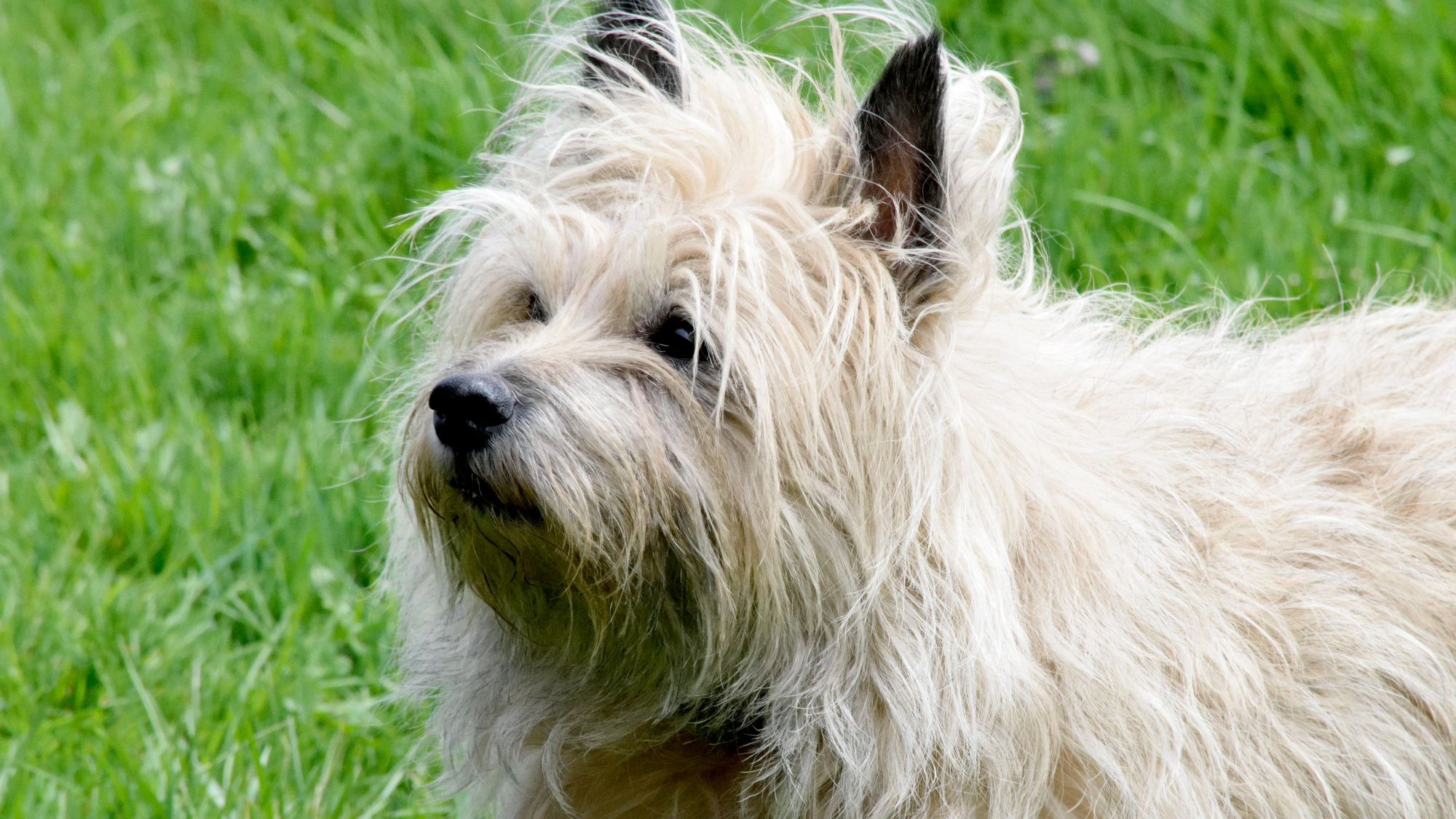
Things to look out for
From specific breed traits to a general health overview, here are some interesting facts about your Cairn Terrier
A dog on a mission
It’s no surprise that Cairn Terriers, a working breed, conditioned for hundreds of years to be helpful to their humans, are not keen on being left to their own devices. Cairn Terriers are busy, sociable little dogs and they thrive on having an important mission. Secretly, they probably don’t mind that that mission is now chasing a ball in the garden before a gentle tummy rub, rather than braving horizontal Scottish rain to dig for rats under a pile of stones. It’s still a mission.
Hardy heritage
Cairn Terriers are active and robust little dogs with a long lifespan—an average of 13-14 years. But like other pure breeds, Cairn Terriers can still be prone to some health issues such as kidney problems, eye issues or Legg-Calve-Perthes disease, a condition in which the head of the femur spontaneously begins to degenerate, possibly because of disrupted blood flow, in time causing the hip to collapse and leading to arthritis. The condition is most common in small dogs and the first sign of it is a limp.
Healthy diet, healthier dog
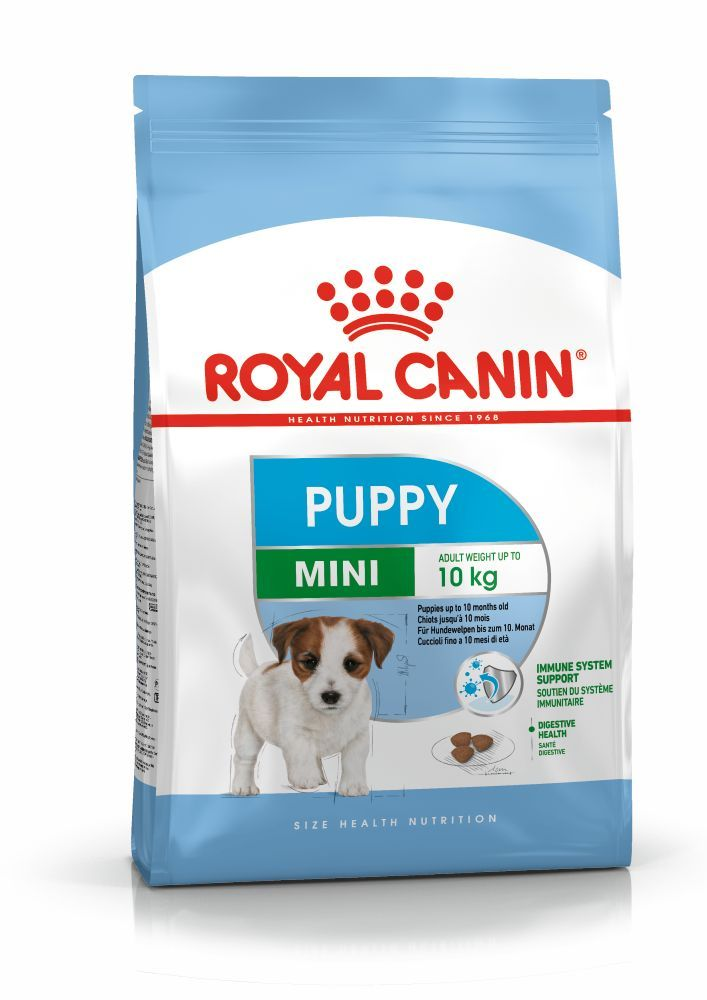
When choosing food for a Cairn Terrier, there are many factors to consider: Their age, lifestyle, activity level, physiological condition, and health including potential sickness or sensitivities. Food provides energy to cover a dog’s vital functions, and a complete nutritional formula should contain an adjusted balance of nutrients to avoid any deficiency or excess in their diet, both of which could have adverse effects on the dog. Clean and fresh water should be available at all times to support good urinary regularity. In hot weather and especially when out exercising, bring water along for your dog’s frequent water breaks. The following recommendations are for healthy animals. If your dog has health problems, please consult your veterinarian who will prescribe an exclusively veterinary diet.
A Cairn Terrier puppy’s requirements, in terms of energy, protein, minerals and vitamins, are much greater than those of an adult dog. They need energy and nutrients to maintain their body, but also to grow and build it. Until they are 10 months old, a Cairn Terrier puppy’s immune system develops gradually. A complex of antioxidants – including vitamin E – can help support their natural defences during this time of big changes, discoveries, and new encounters. Their digestive functions are different from an adult Cairn Terrier’s, too: Their digestive system is not mature yet so it’s important to provide highly-digestible proteins that will be effectively used. Prebiotics such as fructo-oligosaccharides support digestive health by helping balance the intestinal flora, resulting in good stool.
Similarly, a puppy’s teeth – starting with the milk teeth, or first teeth, then the permanent teeth – are an important factor that needs to be taken into account when choosing the size, form, and hardness of kibble. This intense growth phase also means high energy needs, so the food must have a high energy content (expressed in Kcal/100g of food), while concentrations of all other nutrients will also be higher than normal in a specially-formulated growth food. It is recommended to split the daily allowance into three meals until they are six months old, then to switch to two meals per day.
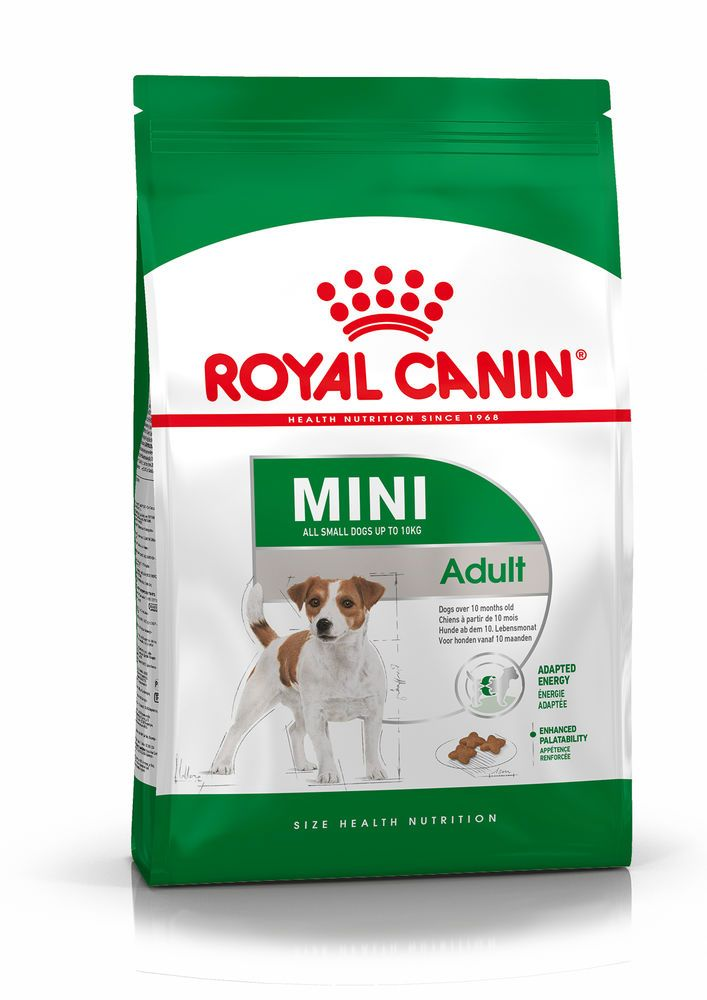
The main nutritional goals for adult Cairn Terriers are:
Maintaining an ideal body weight by using highly-digestible ingredients and keeping the fat content at a sensible level.
Preserving the health and beauty of the skin and coat with the enriched addition of essential fatty acids (especially EPA and DHA), essential amino acids, and B vitamins.
At adult age, small breed dogs are exposed to oral and dental disorders, more precisely, accumulation of dental plaque and tartar. The Cairn Terrier’s teeth and jaws need a lot of protection. A kibble shape and a texture designed to promote chewing can help in slowing down the formation of dental plaque, and a formula containing calcium chelators can help reduce tartar formation, hence helping to support daily oral hygiene. Small breed dogs are well known for being fussy eaters. Exclusive formula and flavourings, as well as a kibble size with a special texture, will stimulate their appetite. Small breed dogs are prone to urinary stones; a diet that supports a healthy urinary system is recommended.
For Cairn Terriers living mainly indoors, highly-digestible proteins, an appropriate fibre content, and very high-quality carbohydrate sources will help reduce faecal smell and volume. Because an indoor lifestyle often means less exercise, an adapted calorie content, which meets the reduced energy needs, and a diet that contains L-carnitine, which promotes fat metabolism, can help maintain an ideal weight. It is important to avoid feeding them human foods or fatty snacks. Instead, reward your dog with kibble taken from their daily meal allowance, and strictly follow the feeding guidelines written on the package in order to prevent excessive weight gain.
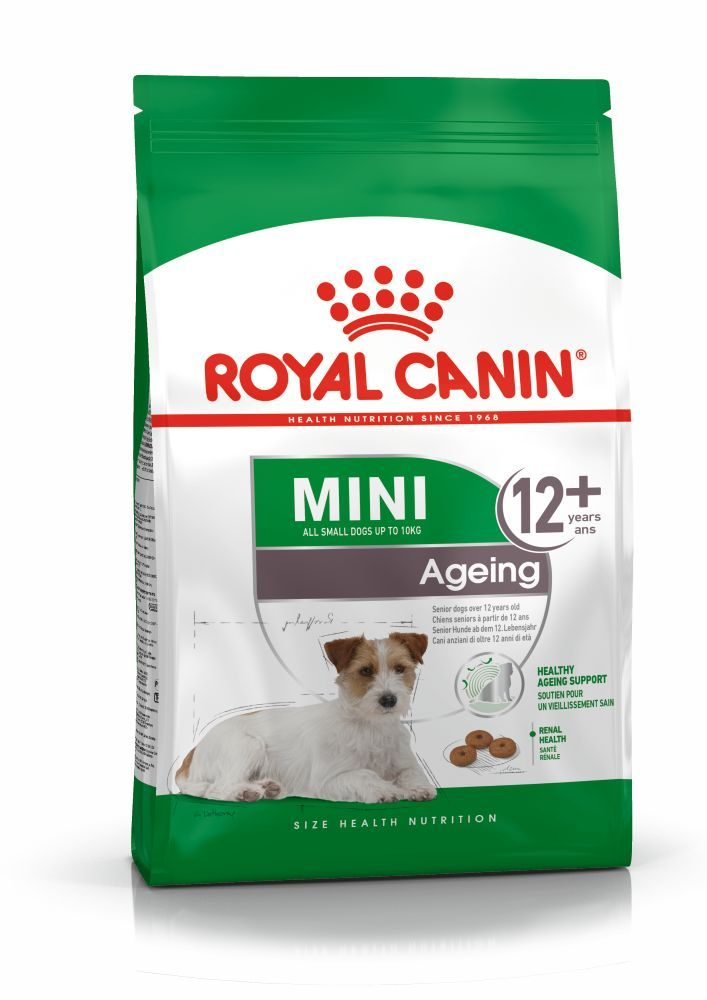
After 8 years old, Cairn Terriers start facing the first signs of ageing. A formula enriched with antioxidants will help maintain their vitality and an adapted phosphorous content will support their renal system. Ageing is also accompanied by the modification of digestive capacities and particular nutritional requirements, so food for older Cairn Terriers should have the following characteristics:
Higher vitamin C and E content. These nutrients have antioxidant properties, helping to protect the body’s cells against the harmful effects of the oxidative stress linked to ageing.
High-quality protein. Contrary to a widely held misconception, lowering the protein content in food brings little benefit in limiting kidney failure. In addition, older dogs are less efficient at using dietary protein than younger dogs. Reducing the phosphorous content is a good way of slowing down the gradual deterioration of kidney function.
A higher proportion of the trace elements iron, zinc and manganese to help to keep the skin and coat in good condition.
A higher quantity of polyunsaturated fatty acids to help maintain the quality of the coat. Dogs can normally produce these fatty acids but ageing can affect this physiological process.
As they age, dogs increasingly suffer from teeth problems. To ensure they continue to eat in sufficient quantities, the shape, size, and hardness of their kibble needs to be tailored to their jaw.
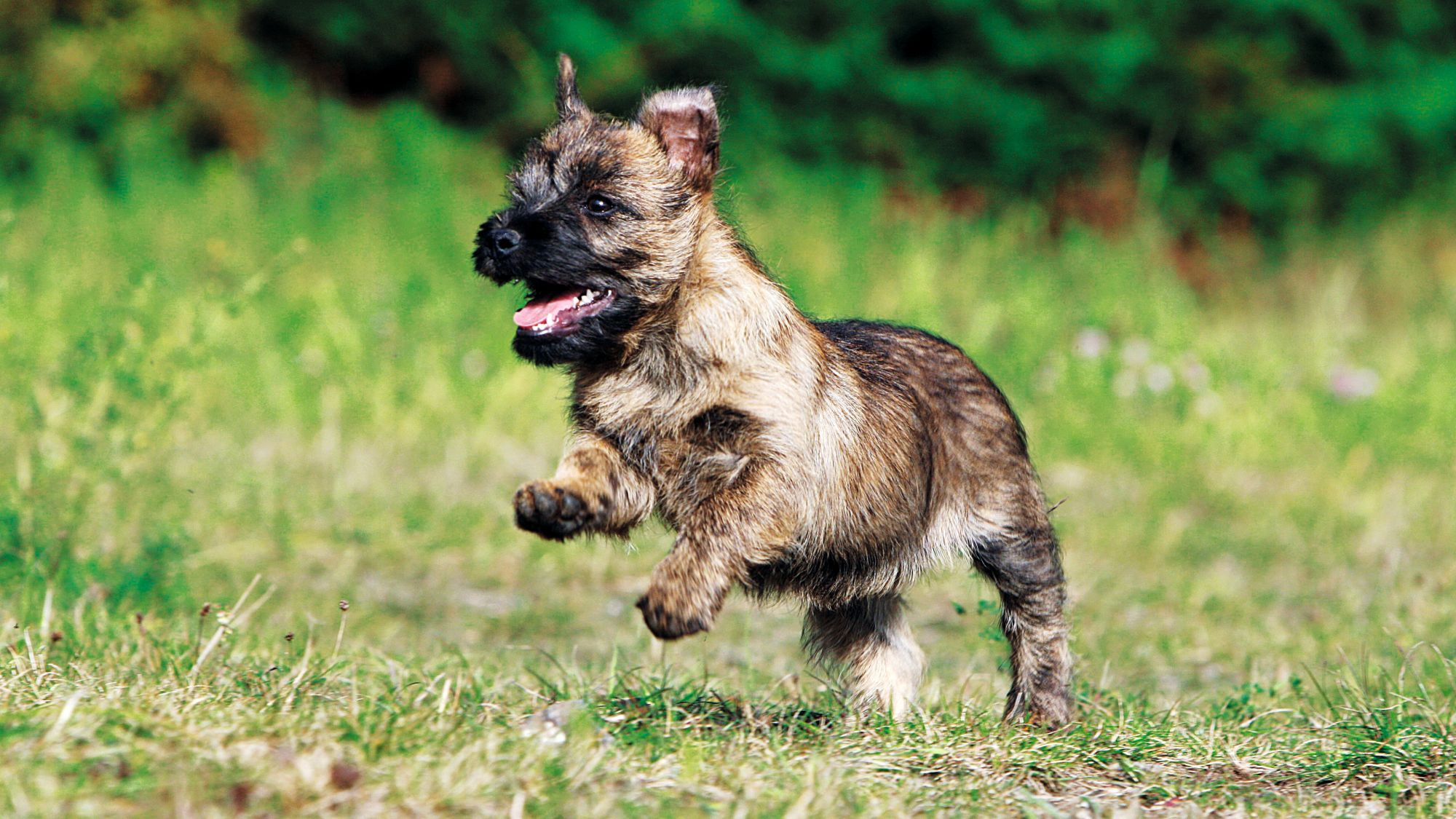
Caring for your Cairn Terrier
Grooming, training and exercise tips
7/7
All about Cairn Terriers
Yes! These hairy little bundles might give off a can-do vibe – can’t stop, places to go, people to see – but Cairn Terriers are also affectionate and thrive as part of a human family, cuddles and all. Once trained, they also really enjoy playing with children—supervised of course.
They shouldn’t be—Cairn Terriers are intelligent and eager to please. They respond well to rewards and should be able to master an impressive range of tricks and commands with patient, positive training. And snacks*.
*Taken from their kibble portion, of course!
Suggested Breeds
Read more on this topic
Sources
- Veterinary Centers of America https://vcahospitals.com/;
- Royal Canin Dog Encyclopaedia. Ed 2010 and 2020
- Banfield Pet Hospital https://www.banfield.com/
- Royal Canin BHN Product Book
- American Kennel Club https://www.akc.org/
Like & share this page